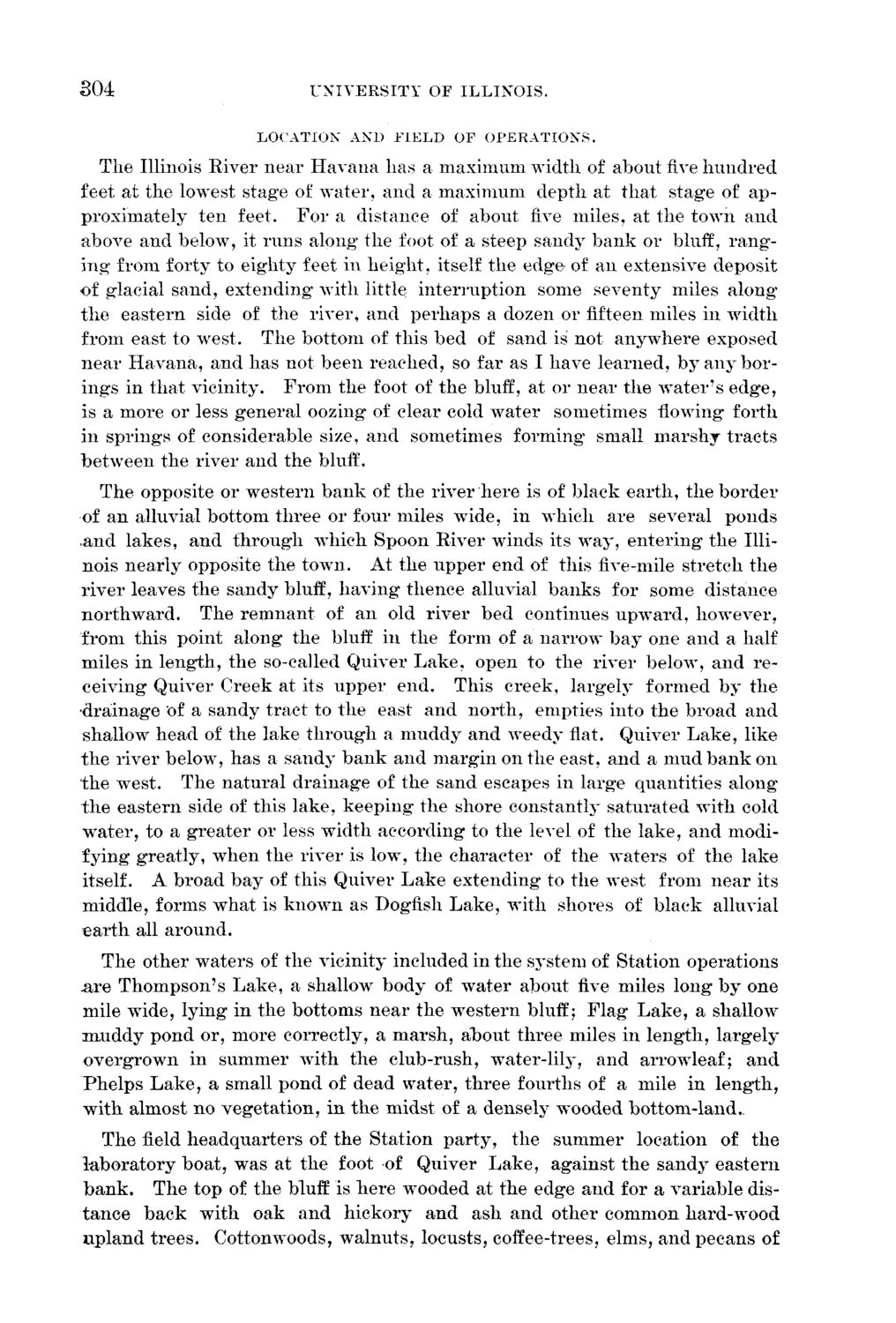| |
| |
Caption: Board of Trustees Minutes - 1896
This is a reduced-resolution page image for fast online browsing.

EXTRACTED TEXT FROM PAGE:
304 UNIVERSITY OF ILLINOIS. LOCATION AND FIELD OF OPERATIONS. The Illinois River near Havana has a maximum width of about five hundred feet at the lowest stage of water, and a maximum depth at that stage of approximately ten feet. For a distance of about Hve miles, at the town and above and below, it runs along the foot of a steep sandy bank or bluff, ranging from forty to eighty feet in height, itself the edge of an extensive deposit of glacial sand, extending with little interruption some seventy miles along the eastern side of the river, and perhaps a dozen or fifteen miles in width from east to west. The bottom of this bed of sand is not anywhere exposed near Havana, and has not been reached, so far as I have learned, by any borings in that vicinity. From the foot of the bluff, at or near the water's edge, is a more or less general oozing- of clear cold water sometimes flowing forth in springs of considerable size, and sometimes forming small marshy tracts between the river and the bluff. The opposite or western bank of the river here is of black earth, the border of an alluvial bottom three or four miles wide, in which are several ponds and lakes, and through which Spoon River winds its way, entering the Illinois nearly opposite the town. At the upper end of this five-mile stretch the river leaves the sandy bluff, having thence alluvial banks for some distance northward. The remnant of an old river bed continues upward, however, from this point along the bluff in the form of a narrow bay one and a half miles in length, the so-called Quiver Lake, open to the river below, and receiving Quiver Creek at its upper end. This creek, largely formed by the •drainage of a sandy tract to the east and north, empties into the broad and shallow head of the lake through a muddy and weedy flat. Quiver Lake, like the river below, has a sandy bank and margin on the east, and a mud bank on the west. The natural drainage of the sand escapes in large quantities along the eastern side of this lake, keeping the shore constantly saturated with cold water, to a greater or less width according to the level of the lake, and modifying greatly, when the river is low, the character of the waters of the lake itself. A broad bay of this Quiver Lake extending to the west from near its middle, forms what is known as Dogfish Lake, with shores of black alluvial earth all around. The other waters of the vicinity included in the system of Station operations .are Thompson's Lake, a shallow body of water about five miles long by one mile wide, lying in the bottoms near the western bluff; Flag Lake, a shallow muddy pond or, more correctly, a marsh, about three miles in length, largely overgrown in summer with the club-rush, water-lily, and arrowleaf; and Phelps Lake, a small pond of dead water, three fourths of a mile in length, with almost no vegetation, in the midst of a densely wooded bottom-land. The field headquarters of the Station party, the summer location of the laboratory boat, was at the foot of Quiver Lake, against the sandy eastern bank. The top of the bluff is here wooded at the edge and for a variable distance back with oak and hickory and ash and other common hard-wood upland trees. Cottonwoods, walnuts, locusts, coffee-trees, elms, and pecans of
| |